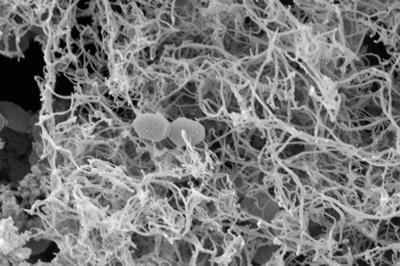NAMRIP researchers use nitric oxide in the fight against the largest cause of childhood antibiotic prescription

Today NAMRIP researchers published their results showing the effectiveness of nitric oxide in reducing antibiotic tolerance in Streptococcus pneumoniae biofilms.
Pneumococcus is one of the key pathogens responsible for otitis media (OM), the most common infection in young children and the largest cause of childhood antibiotic prescription. Despite the introduction of vaccines the overall incidence of OM has not decreased because of serotype replacement. There is therefore a need to identify new treatment strategies to either replace the prescribed antibiotics or improve their effectiveness.
The team showed that low concentrations of nitric oxide significantly enhanced the ability of co-amoxiclav (an antibiotic commonly used to treat chronic OM) to kill pneumococcal bacteria. The paper was published in the journal Antimicrobial Agents and Chemotherapy, with the following citation:
Allan, Raymond N., Morgan, Samantha, Brito-Mutunayagam, Sanjita, Skipp, Paul, Feelisch, Martin, Hayes, Stephen M., Hellier, William, Clarke, Stuart C., Stoodley, Paul, Burgess, Andrea, Ismail-Koch, Hasnaa, Salib, Rami J., Webb, Jeremy S., Faust, Saul N. and Hall-Stoodley, Luanne (2016) Low concentrations of nitric oxide modulate Streptococcus pneumoniae biofilm metabolism and antibiotic tolerance. Antimicrobial Agents and Chemotherapy, 1-42. (doi:10.1128/AAC.02432-15). (PMID: 26856845).